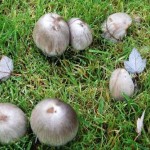READY TO GET STARTED?
REQUEST A FREE ESTIMATE
Fill out the form below or call (888) 466-7849 for a free, no-obligation estimate.
 Calls have been coming into our office with homeowner’s wanting to know why they have mushrooms in their lawn. Mushrooms come from a mixture of moisture (we’ve had a good amount of rain lately), cloudy weather, and organic material such as old mulch, animal waste, or rotting tree stumps.
Calls have been coming into our office with homeowner’s wanting to know why they have mushrooms in their lawn. Mushrooms come from a mixture of moisture (we’ve had a good amount of rain lately), cloudy weather, and organic material such as old mulch, animal waste, or rotting tree stumps.
Mushrooms are the reproductive part of fungi that lives in the soil. Not only are mushrooms an eyesore to your healthy lawn but you don’t want children or pets to have access to them.
You can get rid of the mushrooms by manually removing them from your yard but that still does not take care of the problem. Chances are the mushrooms will return. Mushrooms will often go away when the sun comes out and the soil dries up.
There are preventative measures that you can take to prevent mushrooms from showing up in your lawn:
If you have mushrooms in your yard it is best to call a professional lawn care company to diagnose the problem. Mushrooms can sometimes be a sign of a more serious problem with your lawn.
Northwest Lawn Care professionals will do a Free Lawn Care Analysis and develop a customized plan to help get your lawn back on track to the healthy lawn that we all desire.